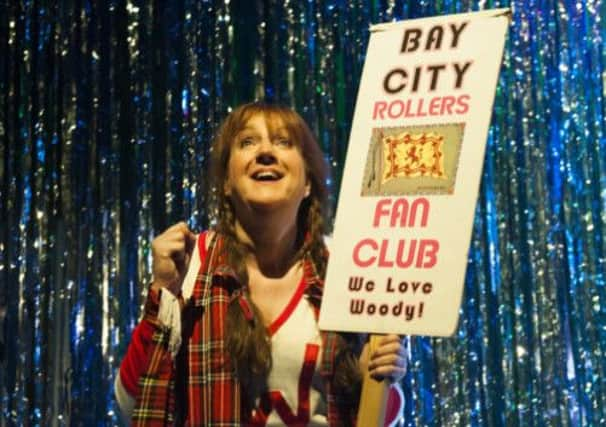Three reasons why we ignore appeal of tribute shows at our peril


Written by Catherine Johnson – the woman behind the great Abba stage show Mamma Mia! – Shang-A-Lang is a smaller and rougher show, first seen in 1998, when the generation who were once teenage Rollers fans were rising 40. Its memorably raunchy script tells of three female friends on a 1970s nostalgia weekend at a Butlin’s camp; and the end result – cheered to the echo by a packed audience of fiftysomething women – is an interesting combination of bubblegum musical tribute, and vaguely feminist girls’- night-out show.
In terms of critical debate, it sometimes seems as though tribute musicals are the orphan children of modern British theatre. Those who love theatre tend to discount them because they depend for their inspiration, energy and box-office pulling-power on other and more popular art forms; on rock and pop music, or on blockbuster musical films, and their spin-off stage versions. Serious music and film buffs, on the other hand, often tend to ignore or even despise tribute shows as money-making travesties of the original work; the big Queen tribute musical We Will Rock You may have the full endorsement of Brian May and Roger Taylor, who sometimes even appear in it, but many serious rock fans speak of its surreal science-fiction plot with something approaching horror.
Advertisement
Hide AdYet it seems to me that those who care about theatre, music and film ignore the growing phenomenon of tribute shows at their peril, for at least three good reasons. First, it’s clear that these shows have become essential to the economic survival of many of Britain’s largest theatres. They dominate the schedule at the 3,000-seat Edinburgh Playhouse. They help the Festival Theatre to survive as Edinburgh’s leading opera and ballet venue; and Shang-A-Lang, a no fuss, mid-scale show made in Scotland, will keep the King’s Theatre in Glasgow busy for a week, later this month.
Secondly, even if tribute and spin-off shows seem like a second-hand form of art to those who love theatre for its own sake, anyone who sees these shows is bound to recognise their extraordinary impact on 21st century audiences. The fact is that there are now generations of people – from the 1950s onwards – who have marked out their lives through the popular culture that seemed to speak for them in their teenage years, or that speaks to them now, as they watch videos or listen to music at home alone. And although these “niche” audiences sometimes seem depressingly well segmented and over-defined, tribute musicals nonetheless seem to be playing a vital role in bringing those tribes of individuals together, and allowing them a collective celebration of the songs, the stories, the stars or the movie scenes they love; they bridge the gap between individual and collective experience in a way that is, and always has been, a key aspect of live theatre.
And finally, if tribute musicals are dealing with the stuff of people’s dreams, and their most poignant memories, then they carry a heavy responsibility to create something on stage that is true to the spirit of the work that inspired the show, and that adds a new creative dimension to it; and many of them live up to that challenge. Some “juke-box” musicals simply do the minimum, in terms of storytelling; but others – like the Tina Turner show, Soul Sister, the Susan Boyle show, I Dreamed A Dream, and the Madness show, Our House, seen in Edinburgh a couple of weeks ago – make serious and successful efforts to tease out the big themes in the lives or the work of the artists involved. Like all art forms, in other words, tribute and spin-off shows can be good or bad, cynical and exploitative, or full of genuine creative energy; time to stop judging the show by the image on its programme cover, and to start giving serious attention to the content.